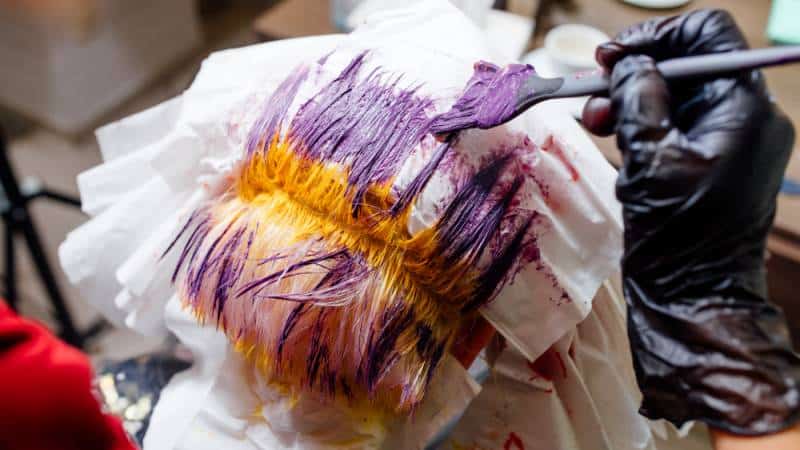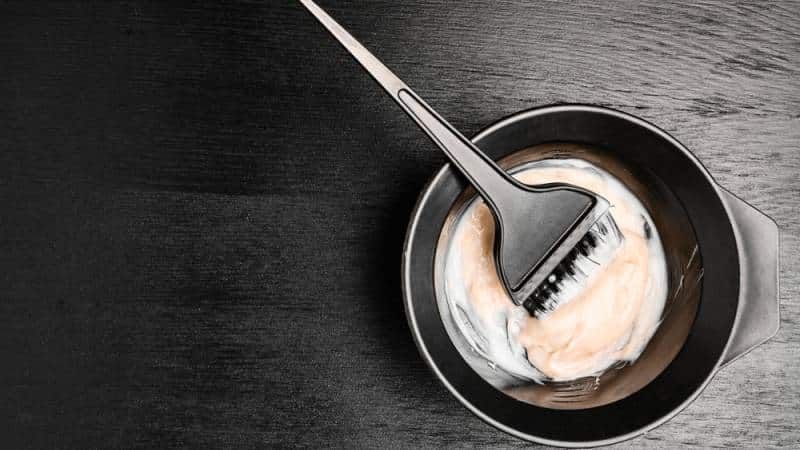When it comes to hair color, there are two main types: single process and double process. There are pros and cons to both types of coloring. But, which one is best for you?
It can be tough to decide what hair color you want, especially when there are so many different options available. In this article, we will explore the two main types of hair colors – single process and double process – as well as the benefits and drawbacks of each. By the end, you should have a better idea of which one is right for you based on your specific needs and preferences.
So, if you’re considering coloring your hair, let’s take a closer look at single process and double process hair color.

What is Single Process Hair Color?
Single process hair color is the most basic type of hair coloring. It involves only one step, which applies a single level of color to your entire head. This can involve adding depth or tones to your natural hair color or completely changing it by covering grays or lightening/darkening your existing hue. Typically, a single process hair color involves the use of semi-permanent dyes or demi-permanent dyes, which will gradually fade over time.
This type of hair color is best for those who want to maintain their natural color while adding some depth and richness to it. It is also great for those who are looking to cover grays without drastically changing their overall look. However, if you are looking for a drastic change in hair color or have particularly resistant grays, then single process hair color may not be the best option for you.
What Are the Benefits and Drawbacks of Single Process Hair Color?
One of the main benefits of single process hair color is that it is relatively low-maintenance. Since it only involves one step, you can easily add depth and vibrancy to your existing color without having to worry about spending too much time in the salon or maintaining multiple products at home. Additionally, many people find that the color results are generally very natural-looking and flattering on most skin tones.
However, there can be some drawbacks to using single process hair color. For example, it may not provide as much coverage for stubborn grays as a double process hair color would. Additionally, since this type of coloring uses semi-permanent or demi-permanent dyes, it will eventually fade over time. So, if you are looking for a more long-term solution to your hair coloring needs, then single process may not be the best choice.
Now that we’ve explored the basics of single process hair color, let’s take a look at double process hair color.
Related:

What is Double Process Hair Color?
Double process hair color is a more intense, long-lasting type of coloring that involves two separate steps. The first step involves bleaching the hair to remove any existing color or pigment, and the second step involves applying a new level of color to the bleached hair. This type of dyeing can be used to achieve everything from a vibrant blonde to a deep, rich brunette.
Double process hair color is best for those who are looking for a dramatic change in their hair color or want to cover particularly resistant grays. It also tends to last longer than other types of coloring, making it ideal for those who don’t want to have to deal with frequent touch-ups at the salon. However, this type of coloring does require more time and effort than single process hair color, and can sometimes cause damage or frizziness to the hair if not done correctly.
What Are the Benefits and Drawbacks of Double Process Hair Color?
The main benefits of double process hair color are its long-lasting results and the wide range of shades and hues that it can achieve. This type of coloring allows you to create unique, bold looks that aren’t possible with single process hair color. Additionally, because double process hair color is applied in multiple steps, it tends to be less damaging to the hair than other types of coloring.
However, there are also some downsides to double process hair color. For one, this type of dyeing often requires multiple salon visits and can be expensive due to the additional time and steps involved. Additionally, it can sometimes lead to frizziness or damage to the hair if it isn’t done correctly, and may not be the best choice for those with sensitive or easily irritated skin. Ultimately, the decision to use double process hair color will depend on your unique hair type, needs, and preferences.

Single-process Vs. Double-process Hair Color: What is the Difference?
While both single-process and double-process hair color techniques can produce dramatic results, there are some key differences between the two methods. For one, single-process hair color tends to be a less time-consuming and more affordable option. In addition, it can be used to achieve a wide range of hues and tones, from bright and bold to subtle and natural. By contrast, double-process hair color is typically used to create more dramatic or intense color changes, such as platinum blonde or vivid red.
Another key difference between single-process and double-process hair color is the level of damage that they can cause to the hair. Single-process dyes are typically less damaging, as they only involve a single step and one type of dye. In comparison, double-process hair colors require two steps and often contain harsh chemicals which can dry out your scalp or cause significant damage if not done correctly.
Which One is Right for You: Single Process or Double Process Hair Color? Things to Consider Before Making Your Decision
Here are some things to consider before choosing which process is right for you:
- How Often Do You Want to Color Your Hair?
With a single process, you only have to go through the coloring process once. With double-process, you have to go through it twice, which can be more time-consuming and expensive.
- How Much Maintenance Do You Want to Do?
Single-process hair color is a lot easier to maintain than double-process. With double-process, you have to make sure both colors stay in balance, which can be tricky.
- What is Your Natural Hair Color?
If your natural hair color is light, single-process will likely give you the results you’re looking for. If your natural color is dark, a double process may be necessary in order to achieve the desired effect.
Overall, the right choice for you will depend on your personal preferences and hair needs. Whether you opt for single-process or double-process, always make sure to consult a professional colorist who can help you find the best option for your specific hair type and goals.


